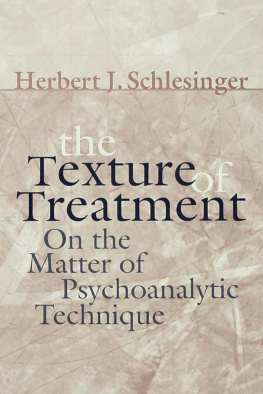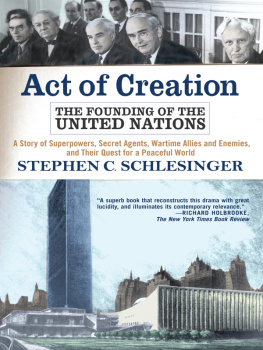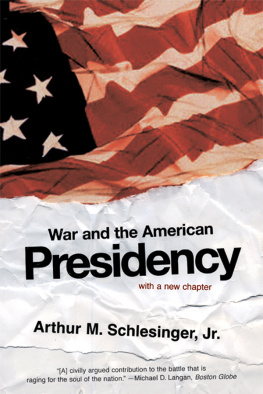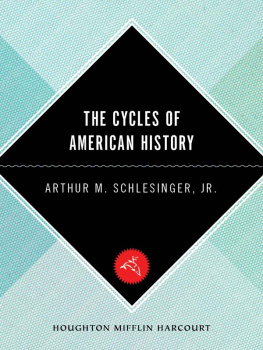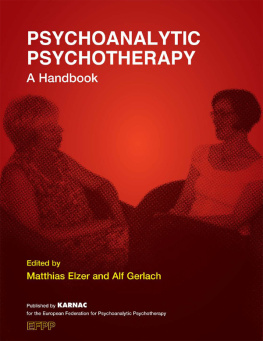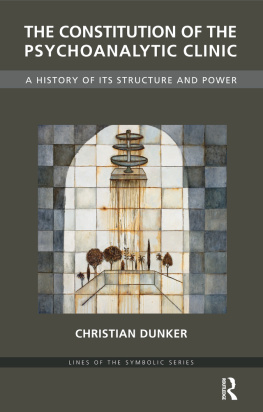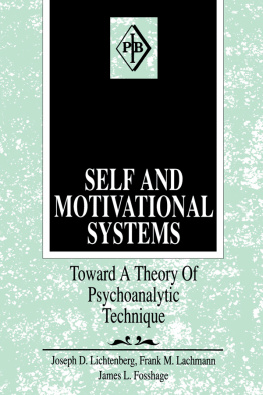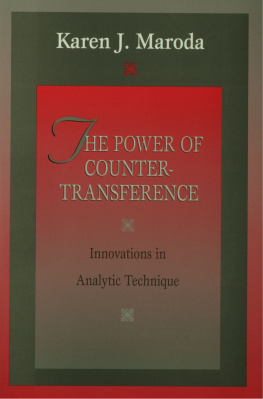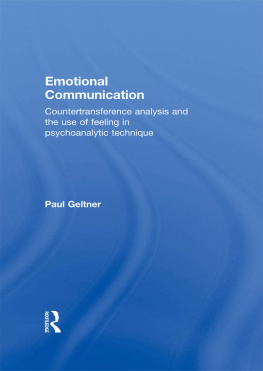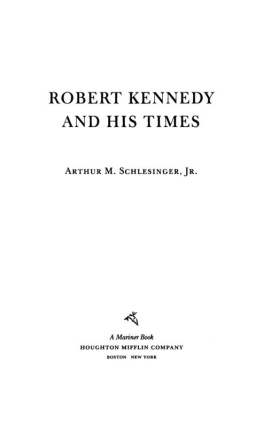Schlesinger - The texture of treatment : on the matter of psychoanalytic technique
Here you can read online Schlesinger - The texture of treatment : on the matter of psychoanalytic technique full text of the book (entire story) in english for free. Download pdf and epub, get meaning, cover and reviews about this ebook. City: Hillsdale, NJ, year: 2003, publisher: Analytic Press, genre: Romance novel. Description of the work, (preface) as well as reviews are available. Best literature library LitArk.com created for fans of good reading and offers a wide selection of genres:
Romance novel
Science fiction
Adventure
Detective
Science
History
Home and family
Prose
Art
Politics
Computer
Non-fiction
Religion
Business
Children
Humor
Choose a favorite category and find really read worthwhile books. Enjoy immersion in the world of imagination, feel the emotions of the characters or learn something new for yourself, make an fascinating discovery.
- Book:The texture of treatment : on the matter of psychoanalytic technique
- Author:
- Publisher:Analytic Press
- Genre:
- Year:2003
- City:Hillsdale, NJ
- Rating:3 / 5
- Favourites:Add to favourites
- Your mark:
- 60
- 1
- 2
- 3
- 4
- 5
The texture of treatment : on the matter of psychoanalytic technique: summary, description and annotation
We offer to read an annotation, description, summary or preface (depends on what the author of the book "The texture of treatment : on the matter of psychoanalytic technique" wrote himself). If you haven't found the necessary information about the book — write in the comments, we will try to find it.
The texture of treatment : on the matter of psychoanalytic technique — read online for free the complete book (whole text) full work
Below is the text of the book, divided by pages. System saving the place of the last page read, allows you to conveniently read the book "The texture of treatment : on the matter of psychoanalytic technique" online for free, without having to search again every time where you left off. Put a bookmark, and you can go to the page where you finished reading at any time.
Font size:
Interval:
Bookmark:

I expect that some readers do much of their reading of new professional books as I do, while standing at publishers displays at meetings. By skimming the introduction, one can generally find everything an author has to say, put concisely, and spare an actual reading, let alone purchase, of the book. You would have had that opportunity to discover what I have to say at low risk if an editor had not urged that I collapse the first introduction I wrote into the first chapter.
Fellow browser, the material you may be looking for is in the first two chapters. You can get from them my point of view and primary assumptions, and they are an easy read. If you have not satisfied your curiosity by then, you may have no choice but to continue until feet or back give out or you put the book down. I hope you will choose the former, more righteous path, but I will understand if you dont. I too have resisted temptation only later to wallow in regret.
There is, of course, a third possible choice. You could buy the book and resolve to read it later. I have often done so when I could not bear to put the book down, but neither could I bear to stand a minute longer. And my bookshelves give mute but dusty testimony to how often my resolve proved no stronger than my back. I hope, if you are intrigued, you will keep standing and read on rather than put the book down. But, if you do buy the book, I hope you also will read it, for a book unread is like a bride unkissed, or so I have been told by the brides I have skimmed on tables of publishers overstocks.
Since you have read this far, let me warn about what you will not find in this book. It is a personal statement. I have not attempted a comprehensive review of the literature on psychoanalytic technique and have referred only to the few authors whose similar or usefully contrasting views called for acknowledgment. I have drawn mainly on my own clinical experience as it has been deepened and expanded by the necessity to explain matters in teaching and supervision, and on some of the findings of research. I have put my ideas in the same simple, everyday language we use when talking with patients. You will find only a few higher level concepts and terms that I could not avoid using.
Although I was raised, analytically speaking, in the tradition of ego psychology, I have tried to stay free of its doctrinal implications, including much of metapsychology, as well as those of the other schools of analytic thought that have emerged during my professional lifetime. I do not find scholastic disputes interesting. I have tried to indicate when I was aware that I was making use of an idea from a source other than a patient.
To keep the length of the book within bounds, I have reserved the sections on ending and termination and impasses and stalemates for separate publication.
Perhaps most analysts were introduced to the mysteries of psychoanalytic technique as I was: that it was not so much a cohesive body of structured knowledge and practice as a loose collection of dos and donts. A chill in the heart warned me that to violate any one of them would ruin the analysis. Cowering before gray eminences, I and my fellow candidates had a bad case of transference to the Institute, for none of our teachers had literally laid down any such doctrine. It was more that no one troubled to disabuse us of the idea that, if somehow we were lucky enough to avoid all the pitfalls set by our natural enemy, the patients, the residue of our avoidance would be pure essence of psychoanalysis. We feared analysis was a fragile flower, one easily crushed in the hands of clumsy beginners. And the patients, we feared, were secretly out to do us in, to abort our nascent careers. Simply through recalcitrance, they could keep us from graduating. It took a while to discover that our patients were even more frightened than we were. It took more time to discover that analysis is not a fragile flower, but a sturdy affair. What we once regarded as fatal mistakes turned out mostly not to matter that much; sins of omissionwhat we failed to doproved much more harmful.
It also seems to me, after later reflection, that we were working with more than a collection of rules of thumb, that there was a structure to the knowledge we use when analyzing patients and that it would be useful to spell out this structure. Karl Menninger and Philip Holzman (1973) have offered us a systematic theory of technique, one that makes great sense to me. The reader will find resonance of this approach in what follows. But their overall approach seems to me too heavily committed to the model of a rational compact between analyst and patient, an idea that does not fit with my experiences in the analytic situation.
I am not offering here an altogether new view of psychoanalytic technique. Rather I am attempting to make explicit that there is a logic to the way we go about analyzing as we listen to our patients and follow their associations. We generally do not pay attention to that logic while analyzing any more than we think about the physics of keeping the bicycle upright while riding (Schlesinger, 1994). But one needs to pay attention to the science when designing a bicycle or when designing a treatment for a particular patient, which after all is what one does when one analyzes. In this book I will present the technique of psychoanalysis and psychotherapy in a way that is both more systematic and simpler than I recall it being taught to me.
The very term technique strikes some clinicians as repellant when applied to psychotherapy or psychoanalysis; it seems to signify a manipulative intent rather than a collaboration and tends to substitute a mechanistic approach for intuitive and empathic understanding. But the term has other implications that are inescapable for a clinician. Psychoanalysis certainly ought to be collaborative: to rest on the analysts intuitive and empathic understanding of the experience of the patient and to encourage the patient in intuitive self-understanding. But the analyst or therapist is more responsible for the conduct of the treatment than the patient is, and the analyst is expected to know what she is doing and why and what to expect when she intervenes. Technique refers to this responsibility of the clinician to conduct a rational treatment.
Technique has a politicized history. Almost from the beginning of the psychoanalytic era, the field has been marked by fervent arguments about preserving the integrity of the method. Self-appointed custodians of the field have worried that any deviation from received wisdom would spoil what was truly psychoanalytic, would dilute the purity of its technique and lead inevitably to seduction of the innocents. The debate has taken different forms and has used different terms across the generations but always within the general concern that, on one hand, ill-considered modifications would impair the integrity of Freuds legacy and, on the other, hide-bound adherence to outmoded doctrine would make the field irrelevant.
The struggle has often had the character of a religious war with clinching arguments based on quotation from authoritative texts rather than experiment and data. The crowning denunciation from the right has been But thats not analysis, and, on the left, But it works. Neither charge is apposite. Both are flawed, logically and psychologicallyand also analytically.
To pursue this discussion of technique with less heat it is necessary to clarify the operative terms and to set down some ground rules: I do not use the word analysis to describe the process under consideration. Rather than permitting the wholesale derogation of a clinicians work with the denunciation, Thats not analysis, or, in its ultimate form, We all know he doesnt do analysis, and between us, neither did his analyst, we require that objectors specify at what point(s) they believe the clinician under observation failed to analyze, either by not attending to something at all or by attending to it in some way the objector considers unanalytic.
Font size:
Interval:
Bookmark:
Similar books «The texture of treatment : on the matter of psychoanalytic technique»
Look at similar books to The texture of treatment : on the matter of psychoanalytic technique. We have selected literature similar in name and meaning in the hope of providing readers with more options to find new, interesting, not yet read works.
Discussion, reviews of the book The texture of treatment : on the matter of psychoanalytic technique and just readers' own opinions. Leave your comments, write what you think about the work, its meaning or the main characters. Specify what exactly you liked and what you didn't like, and why you think so.

